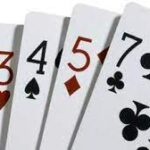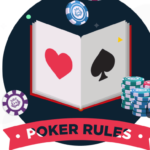There might be a time in your poker career when you grow tired of playing a certain game. Most learned No-Limit Texas Hold’em first and while it is often referred to as the "Cadillac of Poker" it is actually not the best preparation for other games such as Omaha, Stud, Draw, and other poker variants. It can be a bit overwhelming when learning a new game, but as long as you remember some universal poker fundamentals, develop solid PF hand selection, and understand the games rules and betting structure you should be able to forego much of the learning curve which comes along with starting a new game.
Universal Poker Fundamentals
There are a few poker fundamentals which can be applied to nearly every game at any time. The "Theory of Poker" brought us the Fundamental Theorem of Poker which basically states the more information we have about our opponent’s hand the better we will play while the less information we have the worse we will play. In short, if we would have played the hand the same way had we known our opponent’s cards, we made a profitable decision, and had we played the hand differently had we seen their cards, we made a losing or incorrect decision.
Position
What this boils down to is the ability to read hands and gain information via the power of position. Whether you are playing Texas Hold’em, Omaha, or Draw games position is the key! Having position on your opponents allows you to gain more information about their hand strength than they have about yours. This will help you make better decisions on each and every street, thus making it more likely that we would play the hand the same way had our opponent’s cards been face up the entire time. In order to exploit this advantage we should always look to play quite loosely in position and equally as tight when out of position.
The games where this makes the most difference are in draw games such as 5-Card Draw, 2-7 Triple Draw, and 2-7 NL Single Draw. Especially in 5CD and 2-7 Single Draw where there are only two streets of action, pre-draw and post-draw. In these two games position is incredibly beneficial in making good decisions. Position tends to not matter in Stud games as it can change with every deal of the card depending on the door cards showing for each player. Always review your sessions and if you tend to notice the majority of the big pots you are playing come when out of position, you will need to tighten up your ranges from early position and the blinds while opening them up for the cut-off and button.
Table Selection
Finding tables with fish is incredibly important when you are learning a new game. As the saying goes, "If you cannot spot the fish at the table, you are the fish." In order to earn money at poker we must face off against players who are not as good as we are. This can be somewhat difficult to accomplish when learning a new game, but if you are willing to drop down a few levels in stakes you should have little problems playing against opponents who understand less about the game than you do.
Tying in position and table selection is next. It is always important to try to be on the left of the fish at the table. Having position on them on all but one hand (when they have the button) will help you earn the maximum from the mistakes. Another key to seat selection is to not have the best or most aggressive player on your left. This is quite important when you are still unfamiliar with some of the nuances of the game as the better players will have little trouble exploiting your mistakes. The best seat for these players is directly across the table from you. This way we can leave room for the fish to be on our right without the pain of a tough regular on our left. If you happen to start tables with better players, make sure to sit across from them, not by their side.
Bankroll Management
Even if you are just testing out a new game, you still have to follow proper bankroll management guidelines. When your edge is small, or perhaps nonexistent, is when you will experience the greatest amount of variance. Those new to limit games may have never learned proper BRM for fixed limit structures. A good rule of thumb is to have at least 300 Big Bets for a certain level, which is actually 600 Big Blinds. The Big Bet is the bet sized used on later streets in games like 2-7 Triple Draw, Limit Omaha Hi/Lo, and Stud. For example, in a game with $1/$2 blinds the Big Bet will be $4 on later streets. For these games a bankroll of $1,200 is necessary to withstand any short term variance you might encounter.
If your bankroll drops below this 300 Big Bet threshold just move down a level and you will have plenty of cushion to continue learning the game and improving your play. The key is to not go broke while you are adjusting to the new game as it would be quite detrimental to your ability to continue to play.
Pre-Flop Hand Selection
When learning a new game there will be a lot of post-flop, post-draw, or later street situations where you will not yet have the experience to make the best decisions. By playing tight and aggressively before the flop you can avoid a lot of these tough decisions until you have taken the time to fully study the game. In games like Omaha, avoid smaller and medium pairs as well as non-ace suited hands. In draw games such as 2-7, you should always have a deuce in your hand (or an Ace in Ace-to-Five) when entering the pot. In games like Stud or Razz this becomes slightly less important but in Stud Hi try to start with big pairs, three to a suit, or in spots where your opponents are likely to fold for the bring-in bet.
By playing too loosely you will get yourself in a lot of situations where you are either trying to control the size of the pot or unsure whether or not to be value-betting. With stronger hands we can play aggressively and take advantage of those who have decided to enter the pot with trashy hands. There are a lot of guides around on proper Pre-Flop hand selection including many here on FlopTurnRiver. Take the time to review the best hands to play before the flop before you take on a new game.
Know the Rules!
It is imperative you understand the rules of the game you are trying to learn. A lot of players failed to understand basic rules such as betting structure, hand strength, and other important factors which go into each and every pot. In Omaha, be sure to remember you must use two and only two cards from your hand and three cards on the board. This tends to give a lot of players issues on four-card flush boards as well as boards with trips. In order to have a flush you must have two of the suit in your hand and three on the board. On a flop with trips you can have a full house only if you have a pair in your hand. In Omaha Hi/Lo you can use two, three, or four of your cards to make a high and low hand and all five of the board cards as well. However, each high or low hand must still just be two cards from your hand and three from the board.
In 2-7 straights and flushes count against you as do pairs. The best possible hand is 2-3-4-5-7, not 2-3-4-5-6. Even the weakest low hand A-K-Q-J-9 will beat a hand with a pair such as 2-2-3-5-7. The goal here is to make the worst hand possible. Always know if you are playing 2-7 or Ace to Five, as the rules are slightly different as are the nut low card. In Ace to Five, or 1-5, the Ace is the nut low card and straights are allowed as low hands with the wheel, A-2-3-4-5, being the nut low hand.
In Stud games it is important to understand who starts the action. In Stud Hi the lowest door card is forced to bring-in (a smaller bet) while in Razz the highest door card must start the action. You do not have to complete for the entire Big Blind here, just bring in and fold if your hand is trash. In Razz, unlike 2-7, the Ace is the lowest possible card and is a great card to steal with if it is your door card. Most players will give a lot of respect to someone showing an Ace which should be good enough to scoop the antes and the bring in.
Hi/Lo games can also be quite tricky as reading the board can become quite a pain. In Omaha Hi/Lo you need five cards eight-or-lower (Ace is the nut low card) in order to qualify for a low hand. For example, being deal Ac-2h-9s-Td on a board of Jc-Th-8s-4s-2c is not a qualifying low hand but we do have two pair. You must use two cards from your hand and three on the board, and the best low hand we could make in this example is Th-8s-4s-2h-Ac which does not qualify. It can also be difficult to determine who has the best low hand and the easiest way to know is to look at the highest card in the low and go from there. For example, an 8-5-4-3-2 low will lose to a 7-6-5-4-3 low even though the lowest card is in the 8-low hand. Straights are allowed when looking at low hands making a hand like the wheel a very strong hand on both the low and high portions of the hands.
New games can be a lot of fun and can help break up to monotony of constantly grinding Texas Hold’em. Remember to employ key poker fundaments, learn proper PF hand selection, and fully understand the rules of the games and you should have little problem turning a profit even in the early stages of the learning process.
Submit your review | |









